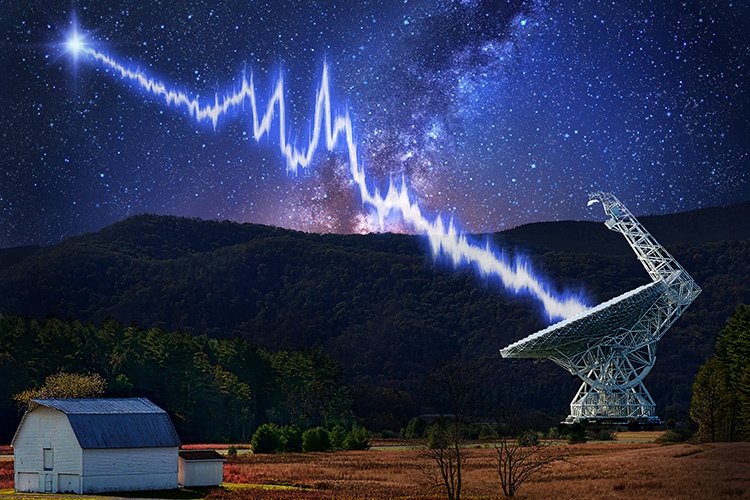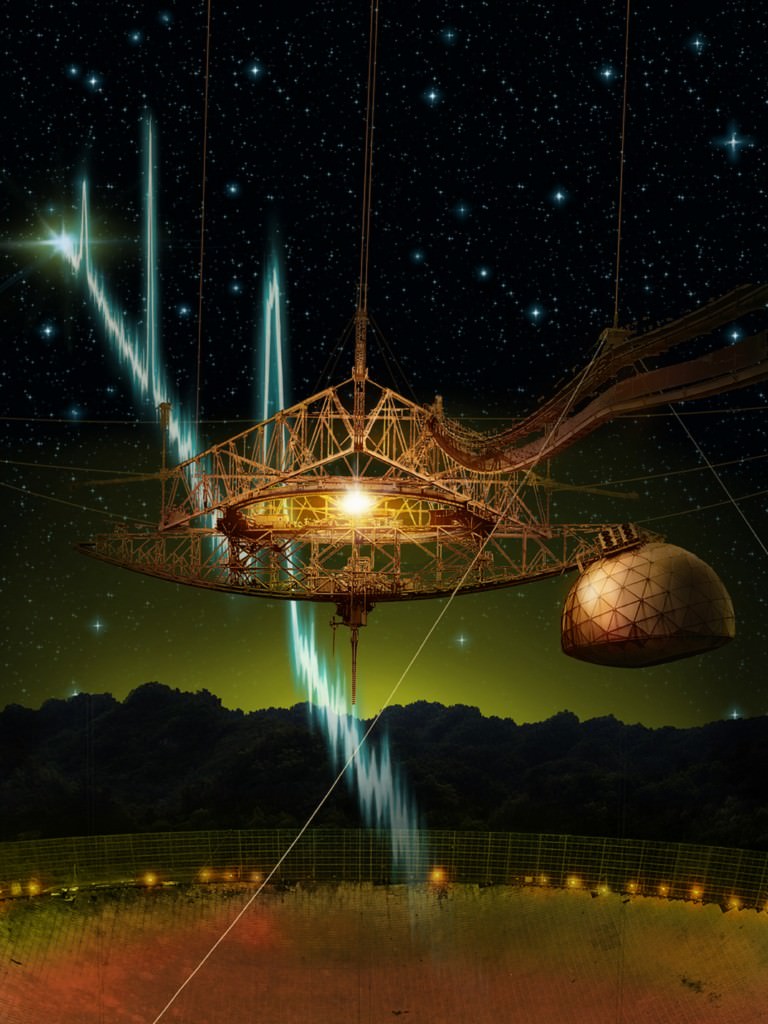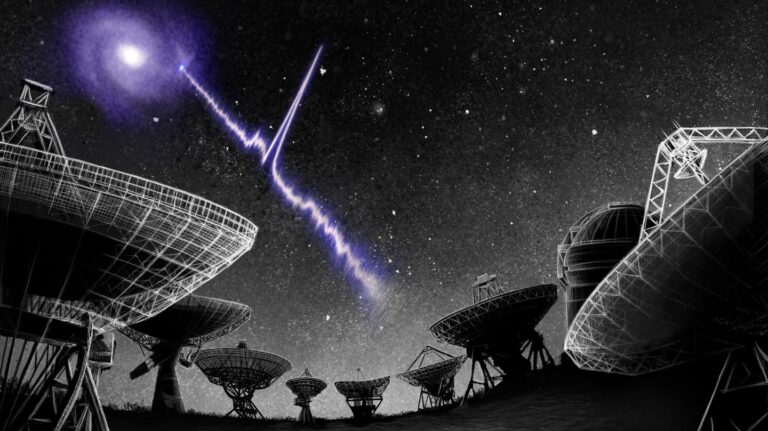Astronomers identified an object that produced 1,652 quick radio bursts over the course of 47 days.
Fast Radio Bursts (FRBs) are one of the modern celestial phenomena most shrouded in mystery. These strange flashes are visible in the radio wave band of the electromagnetic spectrum and last only a few millisecond before vanishing for good. When the first FRB was identified in 2007, astronomers expected that detects them with high sensitivity devices would be possible on a routine basis. It has come with the construction of the 500-Meter FAST Radio Telescope also known as Tianyan or Eye of Heaven.
Since its inception, this observatory has been able to detect a large number of FRBs. Indeed, within 47 days, The National Astronomical Observatories of the Chinese Academy of Sciences (NAO/CAS) detected 1652 individual bursts from a single source.
The study, published in Science, was conducted by the Commensal Radio Astronomy FAST Survey (CRAFTS) team. CRAFTS comprises researchers from Cornell University ‘s Center for Astrophysics & Planetary Science, the Max-Planck Institute for Radio Astronomy, CSIRO, and many more universities in China, Australia, and the US. To explain this phenomenon, FBRs produce a year’s worth of solar output in milliseconds, hence their high energy levels. At times though, astronomers have observed bursts that are known to occur in nature thereby enabling them to conduct further studies.
It is not known why these bursts occur but some hypothesized explanations were given such as hyper-magnetized neutron stars and black holes, cosmic string that remained from the Big Bang and even alien signals.

This exotic explanation appears particularly appealing in the case of repeating FRBs as their interpretation is much more diverse. This holds the signal known as FRB 121102 which was detected in 2012 and is the only known repeater as well as the first FRB with a relatively precise location.
Not only has this signal been pinpointed to a dwarf galaxy 3 billion light years away, but it also detonates fairly frequently. Past research showed that its activity cycle is 157 days long, during which 67 days are passive, while for 90 days it tends to broadcast intense radio bursts. Pei Wang and the universities involved in FAST telescope project have pursued FRB 121102 and documented repeated bursts that include 20 pulses in one day and 12 bursts in two hours.
Wang and his colleagues used these to refine their predictions of the cycle of FRB 121102, which is 156. However, when they analyzed the backend data obtained by the FAST telescope during the initial testing phase of the telescope, they found out that FRB 121102 had a real burst of activity. Over the three months from August 29th to October 29th 2019, FAST picked up 1,652 different bursts in 59. 5 hours spread over 47 days.
Its periodicity changed over time, but the peak hour recorded 122 pulse bursts, the highest event rate recorded from a FRB. The researchers identified bursts with an energy of 480 Nonillion (4. Burst detection is prohibited below this threshold.
“The total energy of this burst set already adds up to 3.8% of what is available from a magnetar and no periodicity was found between 1 ms and 1000 s, both of which severely constrains the possibility that FRB 121102 comes from an isolated compact object.”
They also found out that there are two different modes of the energy distributions of bursts They are dispersed in one of the modes if their energy level is within this range. In other words, it became apparent that short FRB pulses are more irregular, whereas powerful ones are more unchanging. In addition, with the help of the recent findings, the researchers were provided with an opportunity to expand the range of possibilities and focus on the most significant causes. Firstly, one of the key reasons why the FRB sources cannot be explained by an isolated spinning compact object is that, while the FRBs do not repeat periodically or quasi-periodically, their occurrence does not indicate the physical separation of repeated activity from the rest of the source.

Second, the high level of burst rate rejects both high energy and artificial processes, thus precluding ET origins of the phenomenon. Arguably more significantly, they found that a large number of them occur in the space of an hour and this will be a boon to the future researches involving statistical analyses. In effect, they assume that astronomers will be in a position to examine the temporal characteristics of these bursts, with searches covering a frequency band of between 1ms to 1000 seconds.
In addition, they argue that the FAST telescope is going to have significant contribution in the detection of the FRBs. “FAST is found to be sensitive to details of cosmic transients such as FRBs and Li elaborated, ‘As the largest antenna in the whole world’. ”More recently, the CRAFTS project recently documented six new FRBs, one that was identified as a repeater like that of FRB 121102. Some of these and other radio sources are described in the CRAFTS website archive.
Do not forget to share your opinion with us to provide you with the best posts !




0 Comments